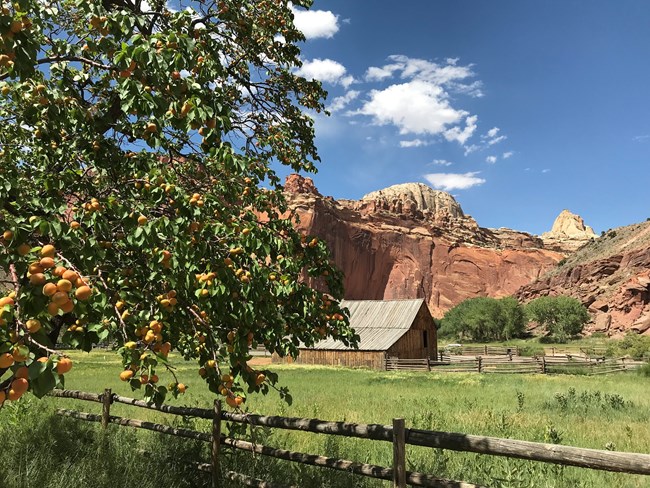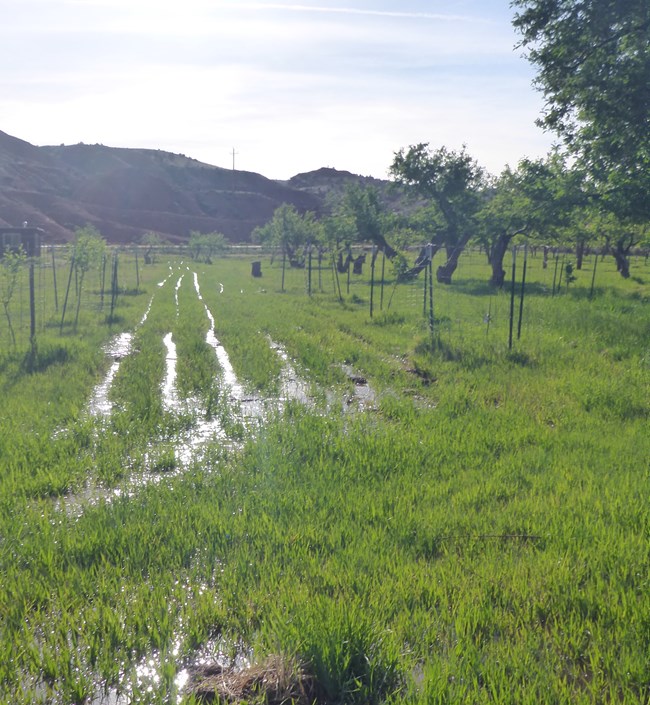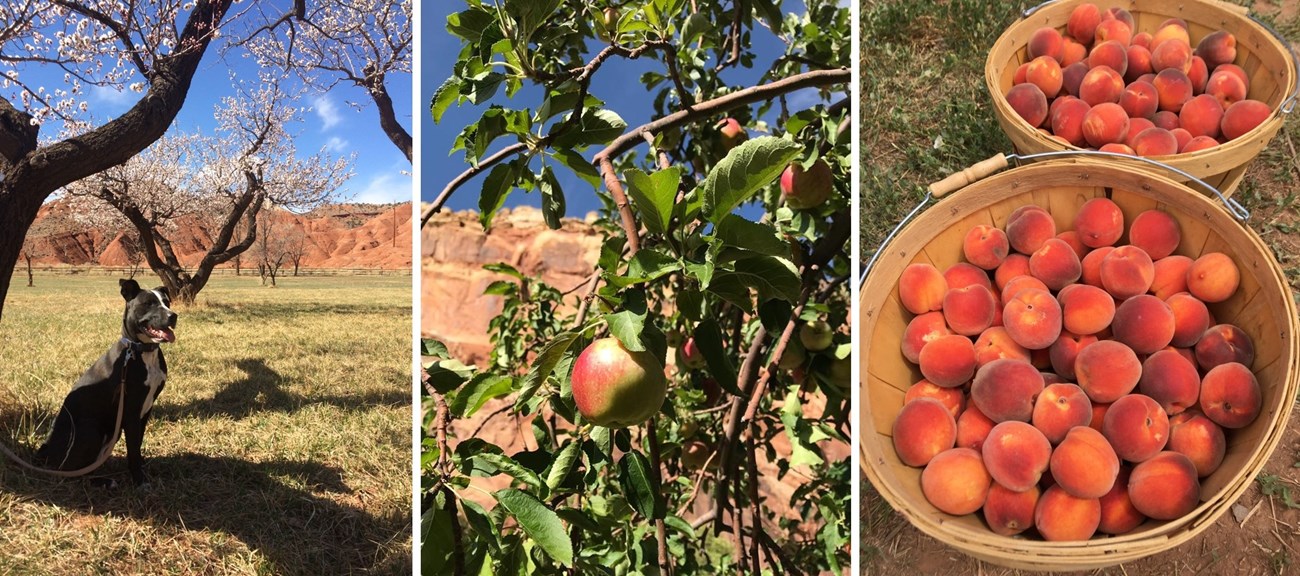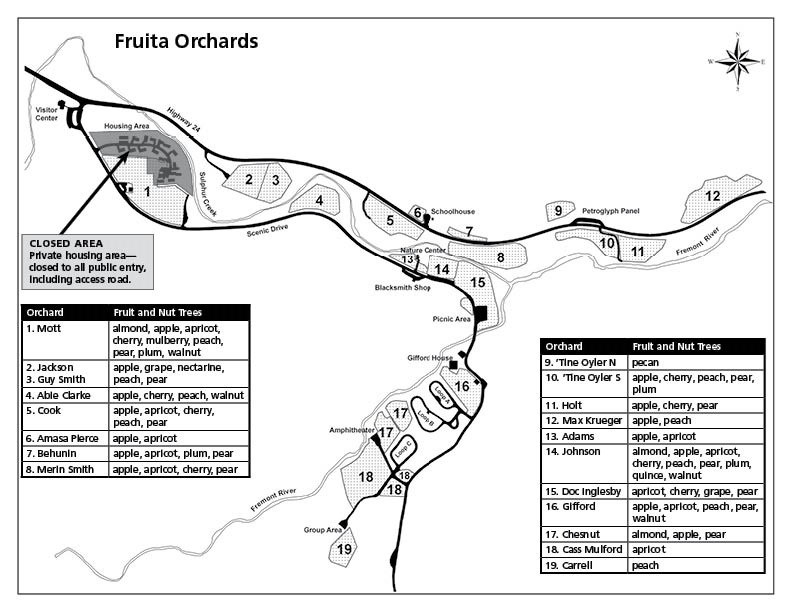
NPS/Shauna Cotrell The orchards that lie within a mile or two of the visitor center are evident remnants of the pioneer community of Fruita, settled in 1880. Many varieties of heirloom fruit are found in Capitol Reef's historic orchards.Read the regulations and look at an orchard map.
NPS/ Ann Huston HistoryLatter-Day Saints pioneers planted thousands of fruit trees in the fertile Fremont River Valley. From the 1880s to 1960s, these trees provided food and income to the families who called Fruita home. Apples, apricots, cherries, peaches, pears, and plums dotted each family’s orchards. Orchard Management TodayPark staff maintain the historic character of these extensive orchards using heritage techniques. The same flood irrigation ditches pioneers dug in the 1880s water the trees today. Pioneers sometimes lost trees and entire orchards to floods and droughts. Today, the climate poses challenges for managers. Warmer temperatures may cause trees to bloom early or out of sync with pollinators, which could reduce the harvest. The National Park Service maintains the orchards year-round with historic cultural irrigation practices, pruning, mowing, pest management, planting, mapping, and grafting. Preserving healthy orchards remains a central goal for Capitol Reef National Park. For both regional neighbors and international visitors, Fruita will continue to be the "Eden of Wayne County." 
Left photo (apricot blooms and black dog): NPS/Ann Huston. Middle photo (apple) & right photo(baskets of peaches): NPS/Jamie Mansfield. Orchard Regulations
All money collected from fruit sales supports the preservation of these historic orchards. Non-payment of orchard fees may result in a citation and fine. 
NPS 
NPS Range of Flowering and Harvesting TimesFlowering Fruit Varieties and Additional InformationShowing results 1-2 of 2
Loading results...
|
Last updated: February 13, 2024


